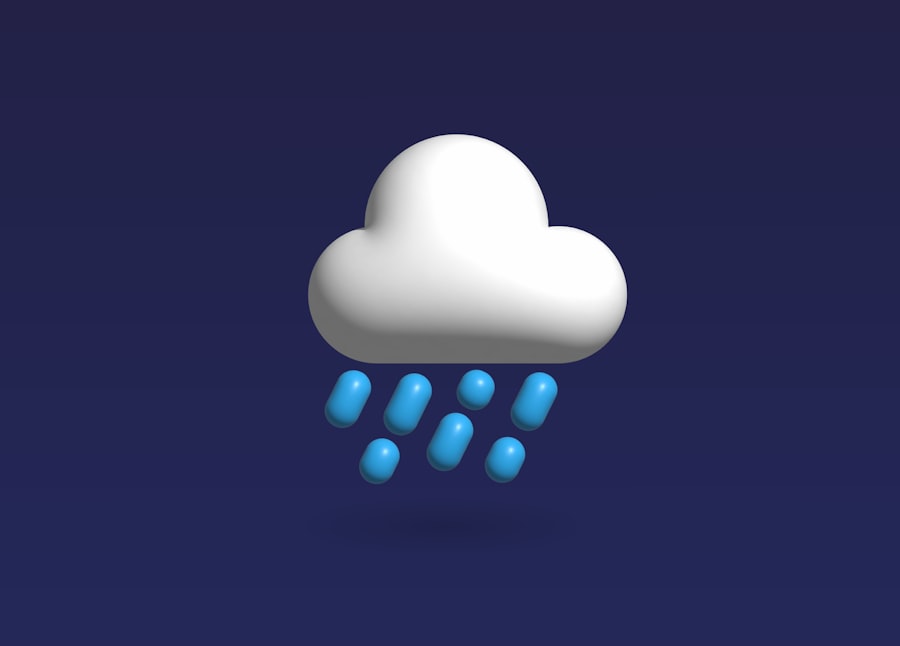The Drake Passage, a body of water located between the southern tip of South America and Antarctica, is renowned for its tumultuous seas and unpredictable weather patterns. This narrow stretch of ocean, measuring approximately 800 kilometers (500 miles) wide, serves as a critical conduit for maritime traffic between the Atlantic and Pacific Oceans. The passage is named after the English explorer Sir Francis Drake, who navigated these waters in the late 16th century.
Its significance extends beyond historical exploration; it plays a vital role in global ocean circulation and climate regulation. Navigating the Drake Passage is not for the faint of heart. The region is notorious for its strong currents, high winds, and large swells, which can create hazardous conditions for vessels of all sizes.
The confluence of the Atlantic and Pacific Oceans, along with the absence of land barriers, contributes to the formation of powerful waves that can reach heights of over 30 feet. Mariners must possess a deep understanding of the Drake Passage’s unique characteristics to ensure safe passage through this challenging maritime environment.
Key Takeaways
- The Drake Passage is a narrow stretch of water between South America’s Cape Horn and the South Shetland Islands of Antarctica, known for its challenging and unpredictable weather conditions.
- Swell forecasts are crucial for safe navigation through the Drake Passage, as they provide valuable information about wave height, direction, and period, helping sailors prepare for and navigate through rough seas.
- Factors affecting swell in the Drake Passage include wind speed and direction, the distance over which the wind has blown (fetch), and the duration of the wind event, all of which contribute to the development of waves.
- Utilizing swell forecasts for safe navigation involves planning routes to avoid the most severe swell conditions, taking advantage of favorable swell patterns, and adjusting navigation strategies based on forecasted swell conditions.
- Technology and tools for swell forecast, such as satellite data, ocean buoys, and computer models, provide sailors with real-time and predictive information to help them make informed decisions about their passage through the Drake Passage.
Importance of Swell Forecast
Swell forecasts are essential tools for mariners traversing the Drake Passage. Swell refers to the long-period waves generated by distant weather systems, which can travel vast distances across the ocean before reaching the shore or impacting vessels. Understanding swell patterns is crucial for ensuring safe navigation, as these waves can significantly affect a ship’s stability and maneuverability.
Accurate swell forecasts allow sailors to anticipate conditions and make informed decisions about their routes and timing. The importance of swell forecasts extends beyond immediate safety concerns. They also play a critical role in operational efficiency and planning.
By analyzing swell data, mariners can optimize their routes to minimize fuel consumption and travel time. This not only enhances the overall efficiency of maritime operations but also contributes to environmental sustainability by reducing emissions associated with prolonged voyages. In an era where climate change and environmental stewardship are paramount, the ability to navigate the Drake Passage with precision is more important than ever.
Factors Affecting Swell in the Drake Passage

Several factors influence swell conditions in the Drake Passage, making it a complex environment for navigation. One of the primary determinants is wind speed and direction. Strong winds blowing over long distances can generate significant swells, while shifts in wind patterns can lead to sudden changes in wave height and frequency.
Additionally, local weather systems, such as storms or low-pressure areas, can exacerbate swell conditions, creating dangerous scenarios for vessels caught in their path. Another critical factor is the ocean floor’s topography. The underwater landscape of the Drake Passage features various depths and contours that can amplify or diminish wave energy.
Shallow areas may cause waves to break more violently, while deeper regions can allow swells to travel with less interference. Understanding these geographical nuances is essential for mariners seeking to navigate safely through this unpredictable passage.
Utilizing Swell Forecast for Safe Navigation
| Date | Wave Height (ft) | Wave Period (s) | Wind Speed (mph) | Safe Navigation |
|---|---|---|---|---|
| 2022-01-01 | 6 | 10 | 15 | Yes |
| 2022-01-02 | 8 | 12 | 20 | No |
| 2022-01-03 | 5 | 8 | 10 | Yes |
Utilizing swell forecasts effectively requires a combination of knowledge, experience, and technology. Mariners must be adept at interpreting forecast data to make real-time decisions that prioritize safety. This involves not only understanding wave heights and periods but also recognizing how these factors interact with a vessel’s design and capabilities.
For instance, larger ships may handle swells differently than smaller vessels, necessitating tailored strategies for each type of craft. Incorporating swell forecasts into navigation plans also involves continuous monitoring and adjustment. Conditions in the Drake Passage can change rapidly, and what may have been a manageable swell earlier in the day could escalate into dangerous territory within hours.
By staying informed about current conditions and forecasts, mariners can adapt their routes or alter their speed to mitigate risks associated with large swells.
Technology and Tools for Swell Forecast
Advancements in technology have revolutionized how mariners access and interpret swell forecasts. Modern forecasting relies on sophisticated models that analyze atmospheric conditions, ocean currents, and historical data to predict wave patterns accurately. Satellite imagery and buoys equipped with sensors provide real-time data on wave heights, periods, and directions, allowing sailors to make informed decisions based on the most current information available.
In addition to satellite data, various software applications and mobile platforms have emerged to assist mariners in navigating challenging waters like the Drake Passage. These tools often integrate multiple data sources, providing comprehensive visualizations of swell conditions alongside other critical navigational information. By leveraging these technologies, sailors can enhance their situational awareness and improve their overall safety while traversing this treacherous passage.
Interpreting Swell Forecast Data

Interpreting swell forecast data requires a keen understanding of various metrics that describe wave conditions. Key elements include wave height, period, and direction. Wave height indicates the vertical distance between the crest and trough of a wave, while wave period refers to the time it takes for successive waves to pass a fixed point.
Direction indicates where the waves are coming from, which is crucial for understanding how they will interact with a vessel. Mariners must also consider how these factors influence their specific vessel type. For example, a ship designed for rough seas may handle larger swells more effectively than a smaller craft built for calmer waters.
Understanding these nuances allows sailors to assess risk levels accurately and make informed decisions about their navigation strategies based on current swell forecasts.
Planning for Swell Conditions
Effective planning for swell conditions in the Drake Passage involves several key steps. First and foremost, mariners should conduct thorough research on expected weather patterns and swell forecasts before embarking on their journey. This includes reviewing historical data to identify trends that may impact their route.
By understanding typical swell patterns during different seasons or weather events, sailors can better anticipate potential challenges. Additionally, creating contingency plans is essential for navigating unpredictable conditions. Mariners should establish alternative routes or safe havens where they can seek shelter if swell conditions become too severe.
This proactive approach not only enhances safety but also instills confidence among crew members who may be apprehensive about navigating through such treacherous waters.
Adjusting Navigation Strategies Based on Swell Forecast
As conditions evolve during a voyage through the Drake Passage, mariners must be prepared to adjust their navigation strategies accordingly.
Flexibility is key; what may have been an optimal route at departure could become untenable as conditions change.
Communication among crew members is vital during this process. Ensuring that everyone on board understands the current situation and any adjustments being made fosters a collaborative environment where safety remains the top priority. Regular updates on swell conditions and navigation strategies help maintain situational awareness and allow crew members to respond effectively to any challenges that arise.
Safety Precautions in Swell Conditions
Safety precautions are paramount when navigating through swell conditions in the Drake Passage. Mariners should ensure that all safety equipment is readily available and in good working order before setting sail. This includes life jackets, emergency beacons, and communication devices that can be used to call for assistance if needed.
Additionally, crew training plays a crucial role in ensuring safety during challenging conditions. Regular drills should be conducted to familiarize crew members with emergency procedures and equipment usage. By preparing for potential scenarios that may arise due to large swells or sudden weather changes, mariners can enhance their readiness and confidence when facing the unpredictable nature of the Drake Passage.
Monitoring Swell Forecast During Passage
Continuous monitoring of swell forecasts during a passage through the Drake Passage is essential for maintaining safety and making informed decisions. Mariners should utilize onboard technology to access real-time data on wave conditions and weather patterns as they navigate through this challenging environment. This allows them to stay updated on any changes that may impact their route or safety.
In addition to technological tools, maintaining open lines of communication with other vessels in the area can provide valuable insights into current conditions. Sharing information about swell patterns or unexpected weather changes enhances situational awareness among all mariners operating in the region, contributing to overall safety in these treacherous waters.
Adapting to Changing Swell Conditions
Adapting to changing swell conditions requires vigilance and flexibility from mariners navigating the Drake Passage. As weather systems shift or new swells develop, sailors must be prepared to reassess their strategies continually. This may involve altering course or speed based on updated forecasts or real-time observations of wave behavior.
Moreover, fostering a culture of adaptability among crew members is crucial for effective navigation in such dynamic environments. Encouraging open dialogue about observations and concerns allows teams to respond collaboratively to changing conditions while prioritizing safety above all else. By remaining alert and responsive to evolving swell patterns, mariners can navigate the Drake Passage with greater confidence and success.
For those planning a journey through the Drake Passage, understanding the swell forecast is crucial for a safe and comfortable voyage. The Drake Passage is notorious for its challenging sea conditions, and staying informed about the latest weather updates can make all the difference. An insightful article that complements this topic can be found on MyGeoQuest, which provides valuable information on navigating treacherous waters. You can read more about it by visiting this related article on their website. This resource offers practical advice and insights that are essential for anyone preparing to traverse this formidable stretch of ocean.
WATCH NOW! Drake Passage: Earth’s Deadliest Waters Revealed
FAQs
What is the Drake Passage?
The Drake Passage is the body of water between the southern tip of South America and the northern tip of the Antarctic Peninsula. It is known for its rough seas and challenging sailing conditions.
What is a swell forecast?
A swell forecast is a prediction of the size, direction, and period of ocean swells. Swells are long-period waves that have traveled from distant storms and can affect sea conditions for surfing, sailing, and other marine activities.
Why is a swell forecast important for the Drake Passage?
The Drake Passage is notorious for its rough seas and strong winds. A swell forecast is important for sailors, researchers, and travelers in the region to prepare for the challenging conditions and plan their activities accordingly.
How is a swell forecast for the Drake Passage generated?
Swell forecasts for the Drake Passage are generated using a combination of satellite data, ocean buoy observations, and computer models that analyze wind and wave patterns. These forecasts are continuously updated to provide the most accurate information.
What factors are considered in a swell forecast for the Drake Passage?
Factors considered in a swell forecast for the Drake Passage include wind speed and direction, wave height, wave period, and the overall weather patterns in the region. These factors help to predict the size and direction of swells in the area.
